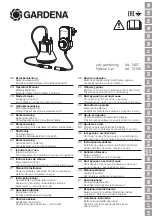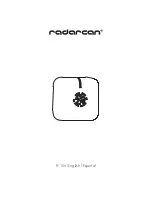
10
Warning:
Should it be determined that the air detection calibration failure has been caused by the presence of oxygen
depleting compounds in the surrounding atmosphere the use MUST take immediate action to rid the area of
such compounds or provide adequate ventilation to prevent such accumulation. The accumulation of
oxygen depleting compounds in the surrounding atmosphere will present a human health risk and hazard.
3.
To clear the error code power down the instrument. The error code will automatically clear.
RECALIBRATION REQUIRED:
Signifies that the prior calibration data is too old and requires refreshing. This message
will appear whenever a 3 minute period elapses from the prior calibration.
Corrective Actions:
1. Remove the sample hose connection from the refrigerant source if so connected. Depress the A button to initiate
a new calibration.
B. Maintenance Procedures
1.
Sample Filter Replacement
Inspection Frequency:
Inspect the sample filter before and after each use of the instrument.
What to look for:
Inspect the outside diameter of the white element for the appearance of any red spots or the presence
of discoloration. The appearance of red spots or the presence of discoloration will indicate that the sample filter requires
replacement. Do not look into the ends of the filter element since the red indicating dye may always be seen from this
angle.
Failure to replace the sample filter when so indicated may result in out of warranty damage to the instrument.
Replacement Procedure:
a)
Power down the instrument and disconnect the sample hose.
b)
Obtain a replacement filter.
c)
Remove the existing filter by pulling it straight up and out of the retaining clip and disconnecting the tube
connections. Do not allow the free tube ends to slip back into the instrument.
d)
Discard the existing filter.
e)
Install the free ends of the instrument tubes onto the ends of the replacement filter being sure to align the filter flow
arrow with the arrow on the instrument case.
f)
Carefully slide the tubes back into the instrument case and position the filter into its retaining clip on the instrument
case.
g)
Inspect the sample hoses for signs of oil entrapment. The need to replace the sample filter may indicate sample
hoses contaminated with oil. Replace or flush the sample hose(s) if oil entrapment is found.
2.
Sample Hose Inspection and Cleaning
Inspection Frequency:
Inspect the sample hose(s) before and after each use of the instrument and after every
replacement of the sample filter.
What to look for:
Inspect the inside diameter of the inner tube for signs of cracking, fouling, oil entrapment, kinks or
other signs of wear. Oil contamination can by cleansed by flushing the hose(s) as described below. Hoses that show
signs of wear should replaced immediately.
Sample Hose Flushing Procedure:
a)
Remove the hose from the instrument and flush with isopropyl alcohol.
Warning:
Flush hoses away from sparks, open flames or any other ignition source and in an area with appropriate
ventilation.
b)
Dry the hose by blowing clean, dry oil-free nitrogen or shop air through the inner tube; or; allow the hose to air-
dry for several hours. Take care not to dry the hose with lubricated shop air.






























